Cars
Andy Saunders and his Custom Cars
His homepage.
Posted By: Paul - Sat Jan 08, 2022 -
Comments (3)
Category: Hobbies and DIY, United Kingdom, Cars
The death of an anti-seatbelt crusader
Jan 2005: Three months after writing an article in a student newspaper denouncing seatbelt laws as intrusions on individual liberties, Derek Kieper died when a vehicle he was in skidded off an icy road into a ditch. Two others in the car, who were wearing seatbelts, survived. Derek, however, was not wearing a seatbelt.I don't know if Kieper ever officially won a Darwin Award, but he's certainly been nominated for one by many people.

Lincoln Journal Star - Jan 5, 2005
Posted By: Alex - Mon Dec 27, 2021 -
Comments (2)
Category: Death, Cars
Rain Goggles For The Motorist
I'm surprised someone isn't selling a battery-operated version of these today as a gag gift. Wouldn't even need to be for motorists. Perfect for anyone out for a stroll in the rain.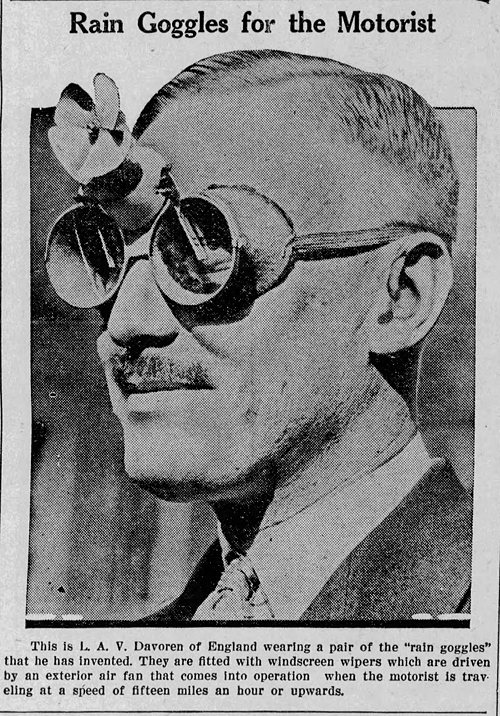
The Oklahoma Freedom Call - Feb 8, 1934
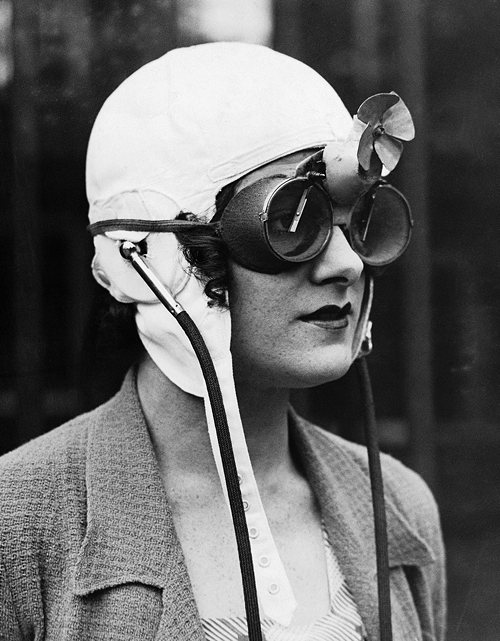
"Miss Paddie Naismith, noted English racing chauffeur, is shown wearing the very latest in motor modes, rain goggles, with wipers 'n' everything. A small fan, you can see it over the bridge of the nose, operates the wipers when the car is travelling at speeds in excess of 15 M.P.H. Its inventor is L.A.V. Davoren of London." — International News Photo, Oct 1933
image source: reddit
Posted By: Alex - Tue Dec 07, 2021 -
Comments (3)
Category: Inventions, 1930s, Weather, Eyes and Vision, Cars
Virta Warrens, From Miss Portland 1930 to the Racetrack
Somewhat in our line of Weird Beauty Queens: her title as a queen wasn't weird, but maybe her subsequent career was--for the times!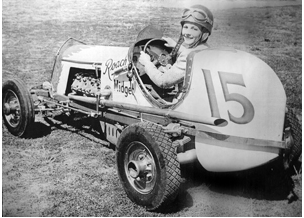
Source of article below.
Read a short charming memoir written by Virta's daughter here.
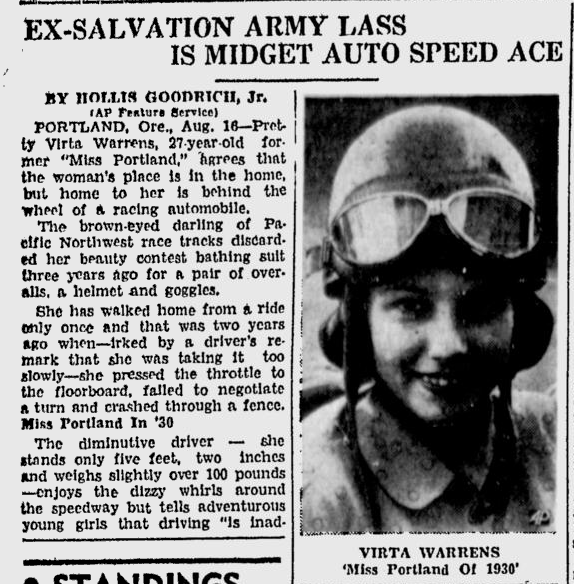
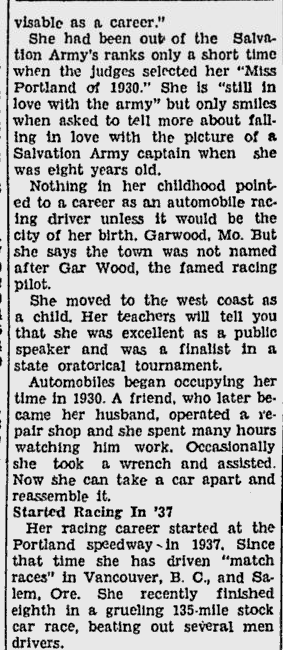
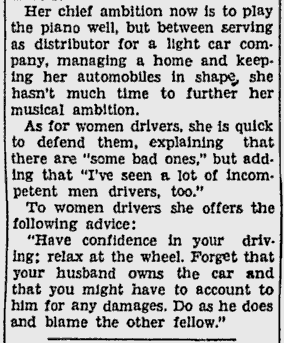
Posted By: Paul - Wed Nov 24, 2021 -
Comments (0)
Category: Beauty, Ugliness and Other Aesthetic Issues, Contests, Races and Other Competitions, 1930s, Cars
Drive-In Movie Ads
With over 100 items like this one below, you can easily waste hours at the Internet Archives page called Drive-In Movie Ads.
Posted By: Paul - Sun Nov 21, 2021 -
Comments (0)
Category: Movies, PSA’s, Advertising, Twentieth Century, Cars
Do you have auto legs?
Beauty advice from The Pittsburgh Press (Feb 20, 1938):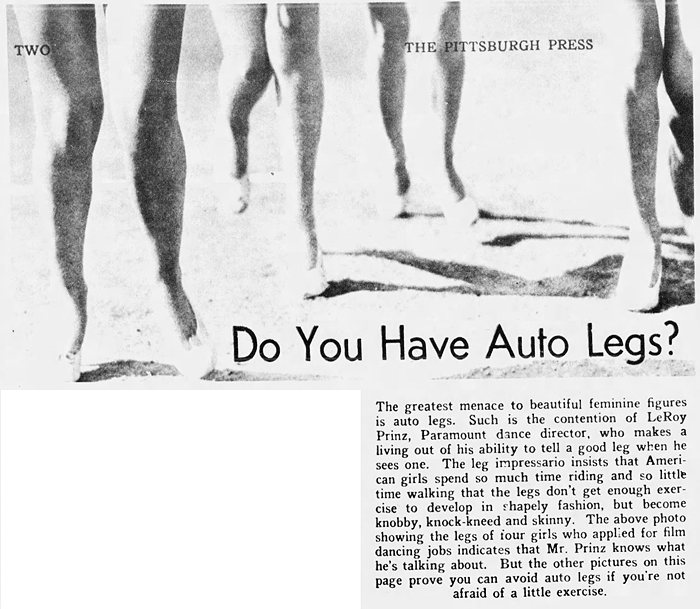
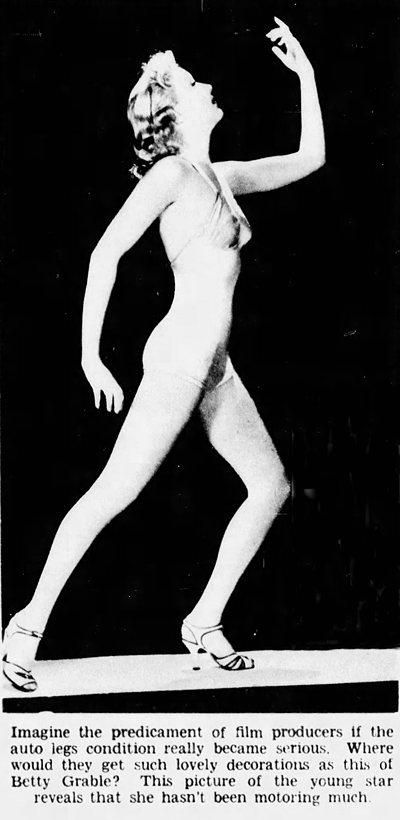
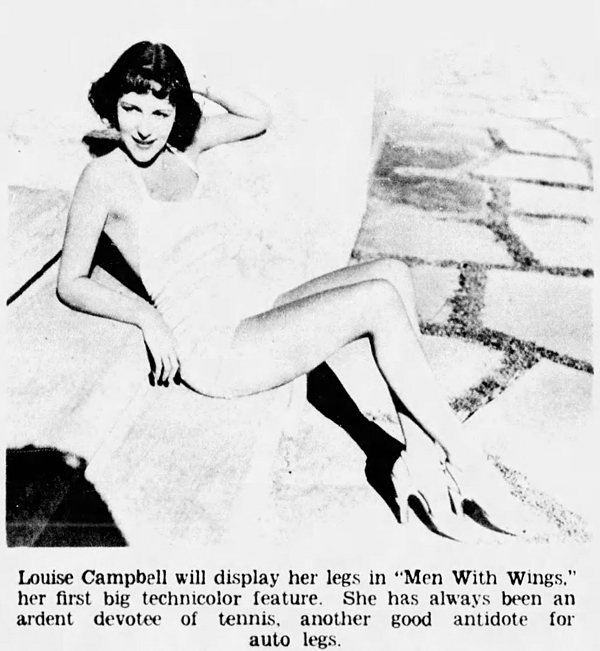
Posted By: Alex - Wed Nov 17, 2021 -
Comments (1)
Category: Beauty, Ugliness and Other Aesthetic Issues, 1930s, Legs, Cars
The Gramocar or Record Runner
The Gramocar has gone under a variety of different names: Chorocco, Record Runner, Soundwagon, and Vinyl Killer. But I like Gramocar the best.It was invented in the 1970s by a team at Sony who had the idea that instead of playing a vinyl record by spinning the disc and keeping the needle stationary, it would be possible to keep the disc stationary and move the needle. They designed the moving needle as a miniature VW van, with built-in speakers, that drove in circles around the surface of a record.
Sony got a patent on the invention (US4232202) but was initially reluctant to manufacture it, saying, "We are a hi-fi company, not a toy company." But they changed their mind, and some were sold in Japan. In that way, the Gramocar gained enough of a following that other manufacturers eventually began making them. And you can still buy one today at RecordRunner.jp.
More info: New Scientist - Feb 5, 1981

Posted By: Alex - Mon Nov 08, 2021 -
Comments (1)
Category: Music, Technology, Patents, 1970s, Cars
No dates for speeders
If Aristophanes's Lysistrata was rewritten to be set in Memphis during the 1930s, it could be about all the young women banding together to refuse to date any boys who drove faster than the speed limit.
Pittsburgh Press - Feb 26, 1939
A better quality picture of Mary Agnes:

Posted By: Alex - Sat Oct 09, 2021 -
Comments (2)
Category: Gender, 1930s, Cars
AutoVision
Back in the 80s and 90s, Jay Schiffman had big hopes for his AutoVision system, which allowed a person to watch TV while driving a car. His device projected the image onto a small mirror positioned on the windshield, so that the driver could look at the road and a TV show simultaneously.Schiffman always insisted that AutoVision actually made driving safer, not more dangerous. From the Chicago Tribune (Sep 6, 1998):
In addition, the images kept the drivers alert, he said, stimulating their sympathetic nervous system, or fight-or-flight response.
I don't think many people were convinced by his argument. But maybe self-driving cars will create a new market for his invention.
More info: Patent No. US5061996A; "TV for Cars" Popular Science (Dec 1990)


Newport News Daily Press - May 15, 1998
Posted By: Alex - Fri Sep 10, 2021 -
Comments (0)
Category: Television, Patents, Cars
Carl Casper’s Phone Booth Car
Visit this page to see a modern version.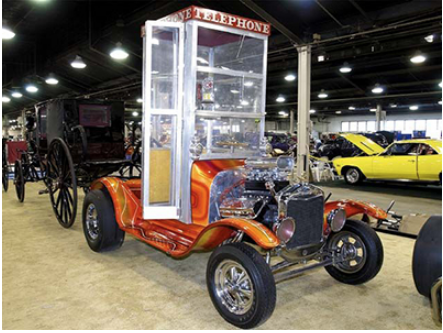
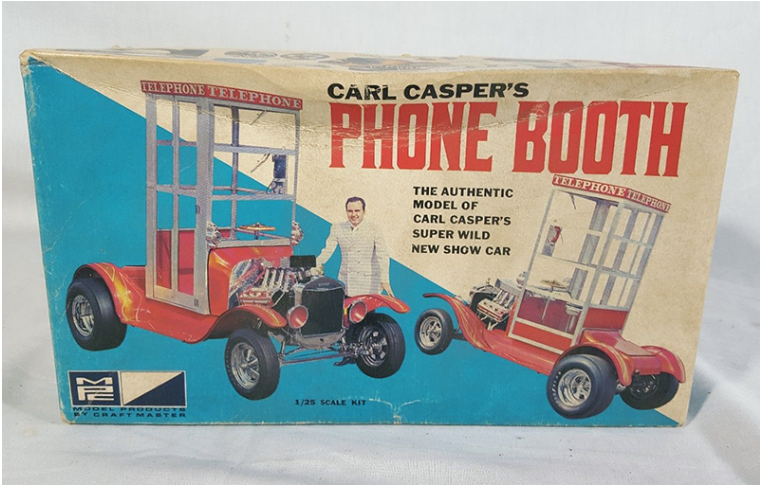
Posted By: Paul - Fri Aug 27, 2021 -
Comments (0)
Category: Eccentrics, Toys, 1960s, Cars

| Who We Are |
|---|
| Alex Boese Alex is the creator and curator of the Museum of Hoaxes. He's also the author of various weird, non-fiction, science-themed books such as Elephants on Acid and Psychedelic Apes. Paul Di Filippo Paul has been paid to put weird ideas into fictional form for over thirty years, in his career as a noted science fiction writer. He has recently begun blogging on many curious topics with three fellow writers at The Inferior 4+1. Contact Us |




